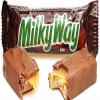Second question first: With the additional requirement of simulating traffic and lane navigation, you're probably now looking at a navigation mesh, which is really just a specialized form of graph that overlays your landscape geometry. The nav mesh provides additional information about where specifically on the map entities can travel. It can also include, for example, preferred direction of travel for multi-lane roads. Traffic lights and behavior around other vehicles would be handled by the AI separate from the nav mesh.
First question: At some point along the line of generating the scene, somebody has to define what is navigable road and what is off limits. If the meshes you are using don't have these defined in some way, then it's simply up to you to do so. Now you may be able to key off things like textures to aid in this task. Any poly that's using a road surface texture is likely part of a road. Defining lanes of travel may possibly be done programmatically if you have consistent lane widths, but even this will likely require some hand massaging to handle special cases. This is part of the purpose of level editors.








